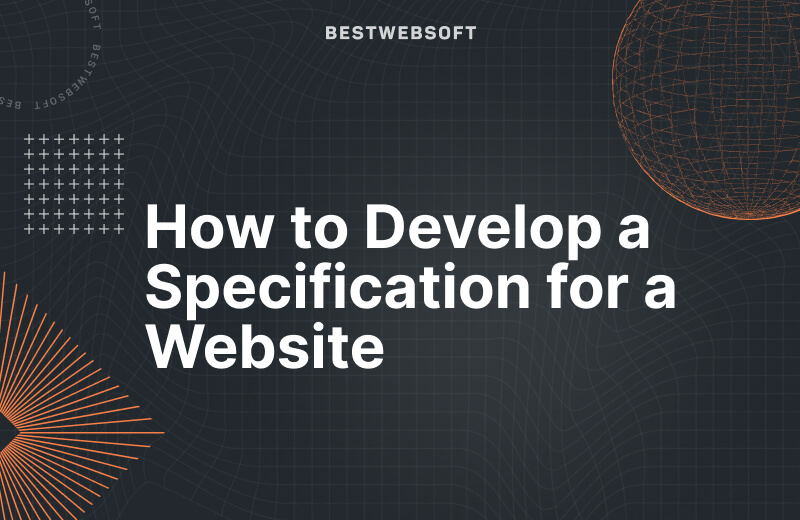
Building a new website can be an exciting and challenging task. Whether you’re starting from scratch or revamping an existing site, it’s crucial to have a clear plan in place. One essential component of this plan is a website specification. In this beginner’s guide, we’ll break down the process of developing a website specification into manageable steps so you can create a blueprint for your site’s success.
What is a Website Specification?
A website specification is a detailed document outlining the requirements and functionalities of a website. It serves as a roadmap for developers, designers, and content creators to ensure that the final product meets the client’s expectations and goals. This document typically includes information about the website’s layout, design, functionality, content, and performance requirements.
Define the Purpose and Goals of Your Website
The first step in creating a website specification is to define the purpose and goals of your site. This information will guide your decisions throughout the development process. Consider the following questions:
- What is the primary purpose of your website? (e.g., selling products, providing information, promoting a service)
- Who is your target audience? (e.g., age, interests, location)
- What are the specific goals you want to achieve? (e.g., increase sales, improve user engagement, boost brand awareness)
Analyze Competitors and Industry Trends
Once you have a clear understanding of your website’s purpose and goals, research your competitors and industry trends to identify best practices and potential opportunities. This analysis will help you make informed decisions about your site’s design, content, and functionality. Consider the following:
- How do your competitors’ websites look and function?
- What features or content do they offer that you can improve upon or differentiate yourself with?
- Are there any emerging trends in your industry that you should be aware of?
Plan Your Website’s Structure
With your goals and competitive analysis in mind, outline the structure of your website. This includes creating a sitemap that lists all pages and their hierarchy, as well as a wireframe that illustrates the layout of each page. These visuals will help you and your development team understand the organization and flow of your site.
Determine Functional Requirements
Functional requirements are the features and capabilities your website needs to fulfill its purpose and goals. These may include:
- Content management system (CMS)
- E-commerce capabilities
- Contact forms
- Search functionality
- User registration and login
Be sure to clearly describe each functional requirement, as this will help your development team understand what needs to be built and integrated into your site.
Design and User Experience (UX) Considerations
Your website’s design and user experience play a crucial role in engaging visitors and achieving your goals. Work with your design team to create mockups that illustrate your site’s look and feel, keeping the following factors in mind:
- Color scheme and typography
- Navigation and menus
- Responsive design for various devices (desktop, mobile, tablet)
- Accessibility for users with disabilities
Content Strategy
Your content is the driving force behind your website, so it’s essential to have a well-planned content strategy. This includes:
- Identifying the types of content you’ll create (e.g., blog posts, videos, infographics)
- Determining the tone and style of your content
- Assigning roles and responsibilities for content creation, editing, and approval
- Developing guidelines for SEO, including keyword research and optimization
Performance and Security Requirements
Performance and security are crucial aspects of your website’s overall success. Make sure to outline requirements related to:
- Load times and site speed
- Browser compatibility and mobile optimization
- Security measures to protect user data and prevent hacking (e.g., SSL certificates, secure hosting)
- Backup and disaster recovery plans
- Ongoing maintenance and updates
Create a Project Timeline and Budget
With all components of your website specification defined, it’s time to establish a project timeline and budget. This will help you and your team stay on track and ensure that resources are allocated appropriately. Consider the following:
- What are the deadlines for each phase of the project (e.g., design, development, content creation)?
- What is the estimated budget for the project, including development, design, content, and ongoing maintenance costs?
- Are there any contingencies or potential obstacles that could impact the timeline or budget?
Collaborate with Your Development Team
Once your website specification is complete, share it with your development team and discuss any questions or concerns. This collaboration will ensure that everyone is on the same page and that your project runs smoothly from start to finish.
Review and Revise
As your website project progresses, be prepared to review and revise your specification as needed. This will help you address any unforeseen challenges or changes in project scope and ensure that your final product aligns with your initial goals and vision.
Conclusion
Developing a website specification is a critical step in ensuring the success of your web project. By following this step-by-step guide, you’ll create a detailed roadmap that guides your team and helps you achieve your website’s goals. With a well-crafted specification in hand, you’re well on your way to building a website that exceeds expectations and delivers results.

